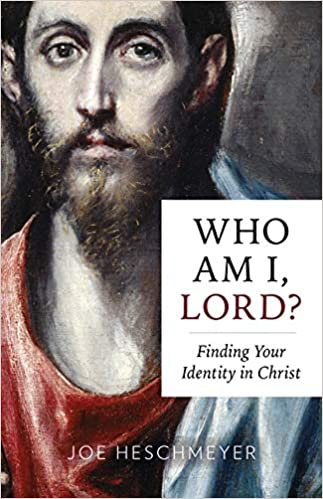When I was at this year’s Catholic Answers Conference, I heard Joe Heschmeyer speak on the subject of identity. This talk is based on what he learned while writing Who Am I, Lord?: Finding Your Identity in Christ His speech gave me enough to think about that I picked this book up there.
In part of the introduction, he writes about the years he spent in the seminary before discerning that the priesthood was not his vocation. He reflected on just how much his identity was wrapped up in him being a seminarian. Not an easy process as you lose what you thought was primary regarding your place in life.
His describing this time in his life hit home with me as something I had not fully processed. It seems to me, we each develop a hierarchy of identities. That it is the primary ones, when lost, do the most disruption. For example, as a widower, I have felt unmoored as something fundamental about my identity is lost. That I am “just too old” to have to be discerning what God wants to do with me, as I thought I had it all figured out.
I found a good deal in this book to help me think about this. The subtitle of “Finding Your Identity in Christ” of course, points to the fact that if we place this at the top of our hierarchy of identifications, we will never lose this. We are indeed called to be children of God and can find everything we need in him.
He described the framework of his book as a diptych. The term is usually used regarding “an artwork consisting of two pieces or panels, that together create a singular art piece these can be attached together or presented adjoining each other.” Wikipedia.
In the last chapter, he again discusses this:
Each of the chapters in this book is half of a couplet: Chapter 1 goes with chapter 3, chapter 2 with chapter 4. The point is that each of the identities of Christ that we’ve looked at has a sort of “companion identity within us, and understanding the one helps us to understand the other. But this chapter is coupled with chapter 4, in which we discussed Jesus as Lord and God.
We must take seriously the idea that we are made in God’s image and likeness and keep orienting our lives to this fundamental idea.
This following story he cites, I think, is representative of the points he is making.
An Elder was asked by a certain Soldier if God would forgive a sinner. And he said to him: Tell me, beloved, if your cloak is torn, will you throw it away? The Soldier replied and said: No, I will mend it and put it back on. The elder said to him: If you take care of your cloak, will God not be merciful to His own image? Apophthegmata Patrum (Sayings of the Fathers)
There was much that I highlighted and found useful. I also delighted in his deft use of humor, such as describing natural theology as “CSI: Theology.” I highly recommend this book.
My musings on the subject sparked by this book are to realize just how disordered we have arranged our hierarchy of various identities. Identity politics has placed on top what is mostly the least important aspects of ourselves. For most of us, we need to reassess this and ground our identity in what is timeless and changeless who not just incidentally, loves us!

